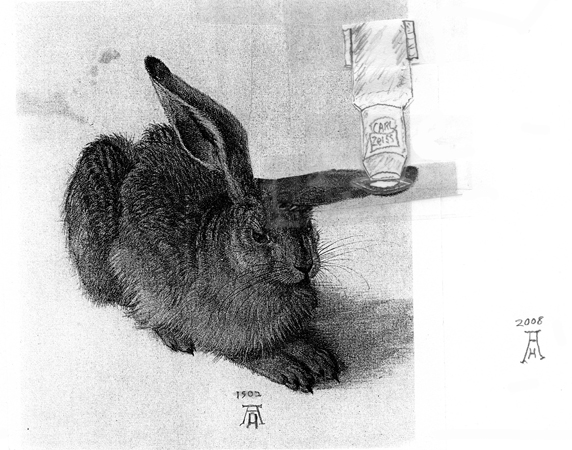Formation of Blood Vessels, October 9, 2020
Formation of blood vessels; Capillaries; Arteries; Veins, Lymph Ducts.Let's notice some analogies between bones and blood vessels:
Both have some mechanism for developing where needed,
in what directions needed,
in what sizes needed,
and being resorbed wherever no longer needed,
and their components continually get renewed and replaced,
PLUS, these mechanisms would be medically very, very helpful if you understood them well enough to control them. (e.g. enlarge blocked arteries, constrict over-enlarged veins, strengthened bones, etc.)
Another similarity is that I believe all these should be thought of in terms of shape homeostasis.
Geometric rearrangement of endothelial cells into hollow cylinders.
Not just differential growth, but spontaneously hollowing-out of solid rods. Also active cell rearrangements, branching of capillary tubes.
video: formation of capillaries. This is a "time-lapse" movie of camera lucida tracing of blood vessel development in an amphibian tail-fin
The original drawings were from this paper: E.R. Clark (1918). Studies on the growth of blood vessels in the tail of the frog larva by observation and experiment on the living animal. American Journal of Anatomy 23: 37-88
video:extension, anastomosis and degeneration of blood vessels over time . Arrows show direction of blood flow in arteries (red).

rabbit ear wound healing between parallel sheets of glass.
Equivalent processes have been observed when clumps of cancer cells were grafted onto inner surfaces of corneas.
Research by Judah Folkman, who used cancer cell invasion as a bioassay to try to demonstrate that some chemotactic attractant substance guides extension of blood vessels toward and into cancers.
Based on his experience as a cancer surgeon, Folkman hoped to discover some chemical that would inhibit vascularization of cancers, thereby starving and smothering inoperable cancers.
Eventually, other researchers identified protein growth factors with the properties that Folkman had postulated should exist.
Is there really any fundamental difference between vascularization versus angiogenesis?
Formation of hollow tubes from solid rods,
from aggregations of cells,
or from sheets of cells
Analogy to formation of neural tubes, sometimes by rolling-up of a sheet of cells ("the neural tube"), in other cases by hollowing out of a solid rod of cells.
Or extension of rods of cylindrical rods of cells from what had been spheres.
Question: Whether these are two or more different mechanisms, or more like sorting out of cells caused by changes of properties.
Is the cause a balance of forces, or like Steinberg's "minimization of free energy", who assumed that spontaneous inter-conversions of masses of cells from one geometric arrangement to another should be regarded as proof that thermodynamics is the best way to understand spontaneousness of any cell rearrangement?
What alternative can we imagine? Rules obeyed by active forces (active in the sense of continually expending energy, as crawling cells do?
Interconversion of solid cylinders to hollow tubes? And the reverse?
Is there some property or behavior of masses of cells that causes this
change?
When a surface contracts with equal strength in all directions in all directions, it will spontaneously become spherical.
This is not because the surface is being minimized.
Really, it is because forces are stably balanced when the surface is spherical.
We need to ask what abstract rules cells need to obey the result of which is that cells spontaneously rearrange and reshape themselves so as to become cylindrical.
Hint: The answer has to do with ratios of strengths of surface forces in the longitudinal forces versus circumferential forces.
If you mold some substance into whatever shape you wish to be spontaneously formed, and then measure whatever strengths and directions of forces develop at all locations on its surface, then what will happen if you somehow cause these same combinations of forces to come into existence all over the surface of your piece of plastic.
But most people can only imagine shapes being created by properties in those cases where soap bubbles actually do develop those same shapes.
This greatly restricts what shapes can be explained.
Quote from an especially good article about Vasculogenesis vs. Angiogenesis
"Vasculogenesis refers to the process of differentiation undertaken by mesodermal cells to form new blood vessels. Vasculogenesis involves three stages: 1) differentiation of mesodermal cells into angioblasts or hemangioblasts; 2) differentiation of angioblasts or hemangioblasts into ECs; 3) the organization of new ECs into a primary capillary plexus as shown in Figure 2A [10]. Angiogenesis refers to the formation of new capillary blood vessels by a process of sprouting from pre-existing vessels (Fig. 2B)."
"Recent evidences of EC precursor cells participating in the formation of new blood vessels in postnatal life have extended the definition of angiogenesis. Thus, while vasculogenesis is restricted to embryogenesis, angiogenesis may occur from pre-existing vessels or EC precursor cells, participating in embryogenesis as well as normal and pathological vessel formation in postnatal life [10]."